New Music CDs Round-Up 14 | reviews, news & interviews
New Music CDs Round-Up 14
New Music CDs Round-Up 14
Including Neil Young, Kings of Leon, Chocolate Genius and Elvis Costello
This month's epic collection has a somewhat retro feel, with CDs by Ray Davies, Neil Young, Elvis Costello and Bob Dylan. The CD of the Month is all-conquering Tennessee rock band Kings of Leon. The Box Set of the Month comes from the vaults of Apple records and there's an amazing compilation of music from Angola in the 1970s. The rest of the selection is bang up to the minute, with the latest electronica, jazz, grime and alt-country dissected by theartsdesk's team of critics, Adam Sweeting, Howard Male, Russ Coffey, Joe Muggs, David Cheal, Peter Quinn, Thomas H Green, Bruce Dessau, Kieron Tyler and Peter Culshaw.
CD of the Month
 Kings of Leon, Come Around Sundown (RCA/Sony Music)
Kings of Leon, Come Around Sundown (RCA/Sony Music)
By Adam Sweeting
Tennessee’s own Kings of Leon have just scored the UK’s best weekly album sales of 2010 by shifting 183,000 copies of Come Around Sundown, which took them straight to the top of the album chart. Mind you, that’s a chunk of change short of its 2008 predecessor Only by the Night, which managed over 220,000 in week one. But it all serves to underline that Kings of Leon are that old-fashioned thing, a rock band in it for the long haul which thrives on making albums. It brings a nostalgic tear to your eye, and maybe the fans are rushing to cash in before they become extinct.
With a line-up comprising three brothers and a cousin, all called Followill, it can hardly help being a family affair, but for this fifth album they’ve cemented those ties that bind by sticking with the successful production team of Angelo Petraglia and Jacquire King. This time, though, they’ve taken the hard-rock surge of their calling-card hits like “Sex on Fire” or “Crawl” down a notch or two, and instead you can catch glimpses of some alt-rock roots and assorted southern references. There were occasional echoes of R.E.M. in their sound before (in “Revelry”, for instance), and it recurs here in the skeletal and funky “Birthday”. More surprisingly, in the zooming bassline and tense, jittery guitars of “The Immortals”, there’s a smattering of Pylon, that other indie-rock band from Athens, Georgia.
But the Kings have cast their net further and wider. In “Mary”, it’s as if they’re looking at 50 years of pop history through the wrong end of a telescope. The structure of the piece is a slow, simple dollop of doo-wop, but they’ve overlaid it with slabs of vocal harmonies, Matthew’s woozy, off-balance guitar solo, and a fog of power chords reminiscent of Eighties indie-metal fundamentalists Husker Du. And is that even a glimmer of New Order in “Radioactive”?
Of course, it’s inevitable that any guitar band hailing from south of the Mason-Dixon line is going to trip over the Allman Brothers legacy at some point. Mercifully, the Kings are not yet displaying leanings towards 20-minute twin-guitar jams, but it’s not difficult to detect something of Gregg Allman’s bluesy soulfulness in Caleb’s vocal in the haunting “Pyro”, where the band strip everything back to let the song’s elegiac, melodic character shine through. Spin forward to “Beach Side” – I’d try to tell you what it’s about, but the lyric is impenetrably cryptic – and you find the combo floating along over a lean, soul-blues groove carried by Jared’s robust bassline, Caleb’s raspy voice and Matthew’s slinky slide guitar. You could smuggle this onto the Allmans’ Eat a Peach album and barely spot the difference.
Yet whatever musical allusions or quotations inform these songs, this is always Kings of Leon music, showcasing a band increasingly comfortable in its own sound world – more so, perhaps, than last time around, where there was a certain amount of breast-beating and point-making in evidence. Now a bona fide Big Band, the Kings are finding space to develop a distinctive vocabulary. They can still fit in the stirring rock blasts of “No Money” or “The End” (which is right at the beginning), but there’s also room for the bawdy, good-humoured “Mi Amigo”, a saga of sex and tequila. In the winsomely down-home “Back Down South”, it’s all cottonwood trees and hickory wind as the band whip out some country guitar licks and a fiddle. For a finale, they even permit themselves a good-ole-boy moment with “Pickup Truck”, a yarn about two guys fighting over a girl (“kicking screaming and rolling around/ A little piece of a bloody tooth…”). Best of all, the more you listen to Come Around Sundown, the better you understand where Kings of Leon have always been coming from.
Watch Kings of Leon talk about Come Around Sundown:
Other CD Releases
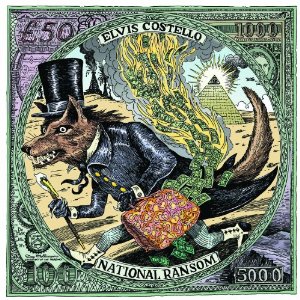
By Howard Male
The title track features a slight variation on the vicious guitar riff from “I’m Not Angry” from Costello’s debut My Aim is True, except that the viciousness is somewhat muzzled by T Bone Burnett’s - dare I say it – conservatively dull production. And also perhaps by what I suspect is a somewhat affected angst on Mr Costello’s part. But we’ll come back to that later. This patchy, overlong album begs the question: why doesn’t this lover of all things analogue - and the integrity of the vinyl Long Player - restrict himself to just a dozen tunes?
Another problem is the album's diversity. Cole Porter playfulness juxtaposed with Country melancholy I can take. But when Dave Edmunds-style pub rockers such as “My Lovely Jezebel”, “I Lost You” and “Five Small Words” suddenly, raucously come up, I just wish Costello had saved them for some future project (and then we would have got our LP-length album).
And to continue with the negatives for a moment longer, am I alone in not having a clue what Costello is singing about much of the time? As ever, the emotive, angry, tender words come thick and fast, all jostling for a place in verses and choruses straining at the seams, but in Costello’s hall of fractured mirrors, precise meaning often remains frustratingly elusive. Even the rather tenuous notion that each tune here is situated in a different time and place (from 1921 to 2009, from Arizona to Pimlico) feels like an afterthought grafted on to imply an overall concept. For example, if it wasn’t for the clue of the date below the lyrics (22 July, 2005) I would challenge anyone to work out that “One Bell Ringing”, with its mention of a hurricane, a lonely bird singing and whispering Portuguese girls, had anything to do with the shocking slaying of Jean Charles de Menezes by London police officers.
But that’s enough complaining, because I am – and always have been – a Costello fan, and there are some delights here too. He goes all Cole Porter on us with “You Hung the Moon” using a close microphone technique (and a bit of self-restraint) to get the soft tones of a 1940s crooner, and it works beautifully. The lyrics - which tell of a family séance to contact a dead soldier - function better too because rather than being shoehorned in, they operate in sublimation to the melody. And the sinister subject matter gains more power from being juxtaposed with such a cosy string-accompanied tune.
And it’s playful, whimsical Costello (metaphorically with his feet up on his writer’s desk) who also charms and seduces on the 1920s pastiche, “A Slow Drag With Josephine” (he even whistles postman-like on the fade), and the cheery closing track “A Voice in the Dark” - which makes it surprisingly easy to picture Elvis Costello tap dancing.
Costello’s 33rd album suggests that it’s time the old bugger stopped playing to camera; stopped trying to resuscitate Angry Elvis in order to placate the fans. Because I strongly suspect that Elvis really isn’t “angry anymore”, he’s actually the happiest man alive - so he should just come clean and admit it in song as he’s already done in interviews. Because when Happy Elvis pops up on this record it’s a joy to hear. And given that the man likes a challenge, there’s nothing harder than writing happy songs that aren’t trite.
Watch a short film on National Ransom below:
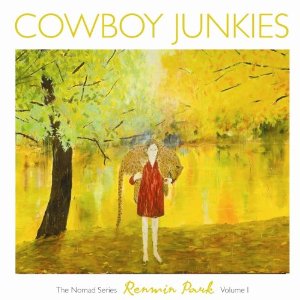 Cowboy Junkies, Renmin Park (Proper Records)
Cowboy Junkies, Renmin Park (Proper Records)
By Russ Coffey
Blimey! If it’s not enough to survive 25 years as a functioning band without actually breaking through to the mainstream, then how about alienating a large portion of the fan-base that you actually have with a hugely ambitious concept trilogy in four parts? On internet forums, Renmin Park, the first instalment, has so far been met with a lukewarm response. It's an unfair reaction, but understandable, as the record's more complex than anything the Cowboy Junkies have done to date, mixing sounds from East and West. But, whilst the Trinity Sessions it may not be, it is, by turns, beautifully melancholic, challenging and rewarding.
The album was inspired by a trip to the town of Jingjiang, a small town on the Yangtze. Renmin Park means “people’s park”, and every town in China has one. Many of the tracks on the album retain a core country-folk feel. Others are deliberately strange, being built on Michael Timmins's “field recordings” of sounds ranging from music and conversations to badminton games, chanting and callisthenics.
The intro aside, things get off to a pretty conventional start with a sweeping country lament, also called “Renmin Park”. Margo Timmins, as ever, summons up a sense of reflection and sadness reminiscent of younger Americana singers such as Aimee Mann. The lyrics are straightforward yet affecting. The same goes for “Stranger Here”, which has a little more of a Yo La Tengo feel, and the gorgeous “Little Dark Heart”, which again evokes the alienation of finding yourself on the opposite side of the world; “I have no home/ I have no name/ I have no one”.
The rest of the album, a little uneven, is divided between fusion pieces written by the Cowboy Junkies and those by Chinese artists. “Sir Francis Drake at the Net” broods like fellow alt-country singer Jim White’s experimental work. Less successful is “Cicada”, which, with its minute-and-a-half preamble, is destined to be skipped. But the really intriguing material comes from the East/West collaborations. “My Fall”, written by Xu Wie, is translated and recast as a pleasant, if not overly exciting, piece of synth pop. “Walk in the Park”, with its Chinese vocals, is more adventurous, but with a nightmarish quality. Most surprising, however, is Zuoxiao Zuzhou’s “I Cannot Sit Sadly by Your Side”, translated and reworked as a sad jazzy country number. It’s the moment on the record where East and West truly meet.
I’m not sure how serious the Cowboy Junkies are about the other three albums - it might be pushing their luck. But with Renmin Park they have succeeded in pulling off one of popular music’s greatest challenges – the truly engaging concept album.
Watch the Cowboy Junkies perform tracks from Renmin Park on KXT:
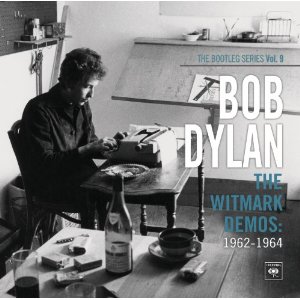 Bob Dylan, The Bootleg Series Vol 9 - The Witmark Demos: 1962-1964 (Columbia)
Bob Dylan, The Bootleg Series Vol 9 - The Witmark Demos: 1962-1964 (Columbia)
By Adam Sweeting
Though the legend of Bob Dylan has grown to the point where it defies reason and logic, this superb collection of his earliest songwriting demos is a forceful reminder of the unprecedented scope of his talents. Scholars of Bob will already own unofficial versions of these tracks, which were recorded for the music publishers Leeds Music and Witmark in New York between January 1962 and late 1963, but these wonderfully crisp reissues ought to find a warm welcome among Dylanologists, folk-music buffs and indeed anybody with an interest in the development of popular music.
While it’s the “Dylan goes electric” period that tends to attract the most excitable coverage, what’s extraordinary about this material is how much leverage Dylan could extract from just his voice and an acoustic guitar (and, remember, these were publishing demos designed to promote Dylan’s songs for use by other performers like Peter Paul & Mary or The Seekers rather than his own official recordings). The bulk of the songs were recorded for Witmark, including unpolished but irresistible takes of milestone pieces like “Blowin’ in The Wind”, “A Hard Rain’s a-Gonna Fall”, “The Times They Are a-Changin’”, “Mr Tambourine Man” (on piano) and a gorgeous “Don’t Think Twice, it’s Alright”, as well as more obscure pieces such as “The Ballad of Emmett Till”, “Seven Curses”, “I’ll Keep it With Mine” or “Gypsy Lou”. However, the batch he cut for Leeds Music, probably in a single session, is by no means negligible. The rocking blues “Ballad For a Friend”, with Dylan’s tapping foot keeping time, is performed with delicacy and finesse, while he handles the brisk pace and comic narrative of “Rambling Gambling Willie” with aplomb.
The detailed sleevenotes by music historian Colin Escott are peppered with revealing anecdotes, not least the one about how Dylan signed two publishing contracts simultaneously. Artie Mogull at Witmark was aghast to hear that Dylan had already inked a deal with Leeds, so he gave him a thousand dollars to buy himself out of the pre-existing contract. Happily for Artie, it worked. Escott also explores the way Dylan’s pioneering arrival as singer, songwriter and co-owner of his own publishing blew a fatal hole in the traditional Tin Pan Alley model whereby singers merely sang, songwriters wrote and publishers published. “Tin Pan Alley is gone, and I put an end to it,” Dylan commented, somewhat immodestly. The times they had a-changed.
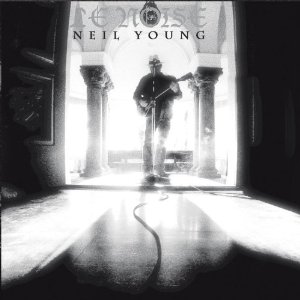 Neil Young, Le Noise (Reprise)
Neil Young, Le Noise (Reprise)
By Adam Sweeting
The supposedly unique characteristic of Le Noise is the way that Neil Young created it with just his voice and a single guitar, acoustic or usually electric, each performance recorded live with no additional instruments or overdubs. Manning the controls at the sessions in his own mansion in Los Angeles was Daniel Lanois, purveyor of bespoke audio treatments to rock’n’roll royalty.
But Young has made a solo album of improvised electric guitar noise before, with his soundtrack to Jim Jarmusch’s film Dead Man, and this is a guy who can single-handedly command the stage of the Hammersmith Apollo with just an acoustic guitar and a glass of water. No doubt Lanois was responsible for the echo and loop effects that lend atmosphere to the tracks, but these don’t achieve anything very different from the feedback barrages Young has regularly whipped up with Crazy Horse.
As ever, the guts of the disc lie in the raw, unadorned power of Young’s writing and performing, and there are moments here when he bores into his creative core with an unsettling laser-like focus. “Love and War” is the most unforgettable song, a haunted epic structured around Young’s surprisingly elegant Spanish-style acoustic guitar, in which he traces a lifelong effort to convey in his work the polarities of the title (“I sang about justice and I hit a bad chord/ But I still try to sing about love and war”). “Hitchhiker” is a potted autobiography tracing his odyssey from Canada to California and superstardom via assorted drugs and emotional changes, and carries a chilling sense of encroaching mortality (“I tried to leave my past behind but it’s catching up with me”). “Peaceful Valley Boulevard” overreaches absurdly in its attempt to encapsulate the entire history of the American West before moving on to a survey of current attitudes to climate change – the clumsy tune doesn’t help – but the swaggering drive and optimism of "Walk With Me" bring some balance to the equation. If you’d never heard Neil Young before you wouldn’t want to start here, but the old goat hasn’t lost the power to astonish.
Watch Neil Young's film of Le Noise:
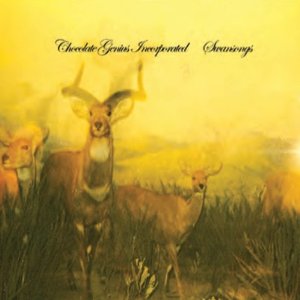 Chocolate Genius Inc Swansongs (One Little Indian/ No Format)
Chocolate Genius Inc Swansongs (One Little Indian/ No Format)
By Peter Culshaw
Chocolate Genius Inc is a name to conjure with - who the hell would call themselves that and where do they come from? I ran into him by accident last month in the streets near Menilmontant in Paris – it turns out his real name is Marc Anthony Thompson and he lives in South Central LA. He’s 55 and this is his first album for five years and, as the title implies, it is an album of farewells. Just as we were about to discover him, he’s likely to disappear again. He’s someone who doesn’t belong to any musical tribe. Bruce Springsteen hired him to sing and play guitar on his 2006 tour, while he’s involved in the avant-jazz scene in New York around guitarist Marc Ribot, but he's also, fundamentally, a modern soul-blues man. Being a moving target seems to suit him artistically, if not from a career point of view.
There are some superbly crafted almost-standard soul songs here like “She Smiles”, "Enough for You" (see video below) and “Ready Now”, although there’s usually some odd angles in even the more straightforwardly conventional songs. He doubletracks his voice – low and high on “Like a Nurse”, which is disconcerting - and there’s numerous sonic adventures and angularities in the production. There are snatches of telephone conversations to ambient noise, including the voice of his dead father in “Mr Wonderful”.
Just when you think you might be getting seduced comes a twisted song, “Lump”, like “Huey Lewis with Tourette’s”. Explaining on “How I Write My Songs”, he says, “I showed my soul to the woman at the 7/11/ She said, Is that all?” An amusing start, before plummeting to a dark, jealous chorus of “Where were you last night?”, which is what’s really on his mind. Chocolate Genius is an electrifyingly vital poet of heartbreak and failure and farewells. That should be a big demographic of fellow sufferers right there, even if his spiky cleverness, painful honesty and lack of tribal identification may well keep him under the radar, which is where he seems to be most comfortable. Even if, as he says, “Karma doesn’t make your landlord happy”.
Watch Chocolate Genius and friends perform "Enough For You":
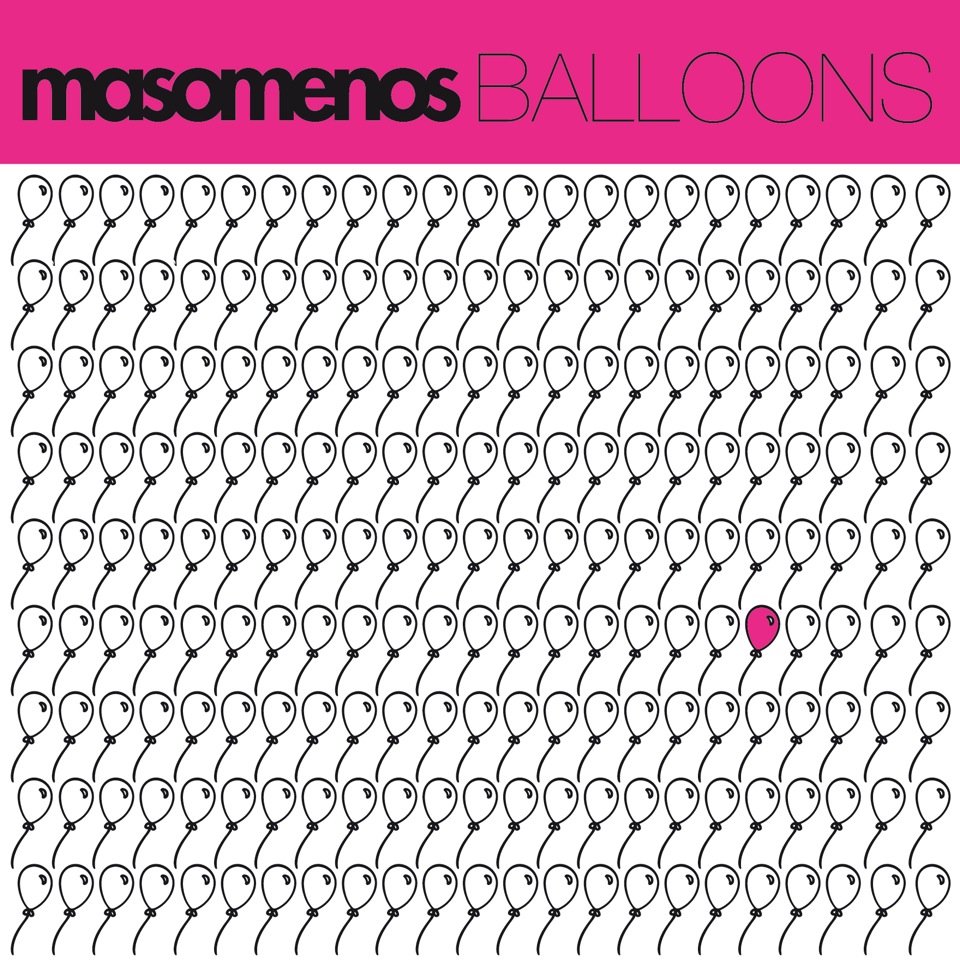 Masomenos, Balloons (Welcome To Masomenos)
Masomenos, Balloons (Welcome To Masomenos)
By Thomas H Green
Minimalism in any art form is a hard one to pull off. Whether it's the linear graphics of the Russian abstract artist Malevich on canvas, or the stark drum patterns of "Spastik" by electronic act Plastikman, there will always be those who fume, aghast, "But anyone can do that!" The problem is further exacerbated by the fact that minimalism is the easiest thing to do badly, an open doorway for aspirational chancers everywhere. This was writ large during the boom in minimal techno a couple of years back, when everyone and their cyber-dog released tunes that appeared to be them turning on drum machines and heading off to make a cup of tea.
Dancefloor minimalism at its most potent can hypnotise listeners, especially under the influence of Ecstasy, a drug that has been laboratory proven to render looping repetition an almost physical pleasure. Such cyclic rhythms synchronise with the pulse of the living body, and perhaps even resonate with tribal memory in our DNA. Taking this and making it interesting outside a chemically altered dancefloor is a daunting task but that is what French duo Masomenos achieve on their debut artist album.
Producer Adrien de Maublanc and DJ/graphic designer Joan Costes have quietly carved a unique path through clubland. The pair are responsible for the Costes series of compilations, which combine modern electronica with lounge sounds, and, like Lemon Jelly before them, their visual representation has become a signature, making them collectable and allowing them even to open a shop in Paris. Their music, however, is a gloopy, low key tech-funk that sounds unlike anyone else. There's a slight similarity to German DJ Ricardo Villalobos's experiments but Masomenos are lighter and more humorous.
Each track is blended with the next, thus the title for track one is "Sansula/El Toucan" while track two is "El Toucan/Coco" and so on. All are built around deep bubbling percussion that never becomes excitable or heads for a peak dancefloor moment. Instead they concentrate on the details filling out their sound with curious flavours - a xylophone, insectoid clicks, abstract Italo-house piano lines and, most especially, treated vocal samples, usually incomprehensible - that stir extra weirdness into the concoction as a whole.
What makes Balloons a winner rather than an exercise in oddball self-indulgence is that it's warm, quirky and human. It throbs along with easy purpose but ghosts flit about the sonic stew, slivers of "dooby-doo" dinner-club vocals on "Chilli Con Chanme/8 Ball", for example, or the military tattoo that haunts "Hahaha/Moody Moon". The latter is faintly akin to the ballistic, drum-addled Nineties dancefloor classic "20 Hz" by Capricorn but Masomenos are not, eventually, much concerned with making us dance. Instead they gradually mesmerise, fascinating the listener into falling under the spell of their strange subterranean sonic world.
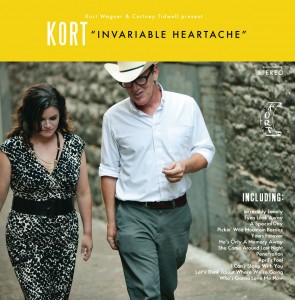 KORT, Invariable Heartache (City Slang)
KORT, Invariable Heartache (City Slang)
By Thomas H Green
KORT is Kurt Wagner and Cortney Tidwell, both of whom are usually welcome listening in their own right. Wagner is the central figure in alt-country perennials Lambchop, a selection of whose critically lauded albums are currently being re-released by City Slang. His forte has been to bring a postmodern but richly emotional sensibility to country music, fronted by his distinctive quavering voice. He has collaborated with many artists in the past - the song "What New York Couple Fight About" with Morcheeba, for instance, is a lost classic - but Cortney Tidwell could not be a better foil.
Where Lambchop bloomed out of the small, punky, alternative scene in Nashville, never part of the establishment, Tidwell was born into minor country royalty. Her mother was the late singer Connie Eaton and her family were mainstays at the Grand Ole Opry. It is to them that this album turns its attention. Tidwell's grandfather Slim Williamson ran Chart Records, a country and western label that lasted from 1962 to 1975, and was later A&Red by Tidwell's father Cliff Williamson. KORT is a project to disinter this now relatively obscure imprint and record a dozen of the duo's favourite numbers from the back catalogue.
The good news is that the way they've put it all together, it doesn't sound like a hokey pastiche of the past but fits well with their own oeuvres. From the very start, as the pair duet on the stripped down "Incredibly Lonely", they maintain trad country's sense of heartbroken longing, but put it into a contemporary indie-tinted context. The lonesome passion and sweetness of Tidwell's vocals plays well off Wagner's tentative vulnerability, and a steel guitar is never too far away. They also know how to have a good time. "Picking Wild Mountain Berries" is great fun, a jolly duet wherein the song's protagonists have patently not been out picking the berries of the title for they return home without them and covered in dirt, strongly hinting that something more carnal has been taking place. For the most part, though, Invariable Heartache is at its best when drowning in melancholy, bringing to mind images of pining on porches in dusty Tennessee backwaters. Here Tidwell comes into her own. The likes of "Yours Forever" and the emphatically lovelorn "I Can't Sleep With You", stripped of all their Nashville schmaltz, turn out to be sturdy songs that can stand being represented in pared down form. Wagner and Tidwell have struck a rich seam of their mutual heritage and hearing them get stuck into it with gusto is an unexpected treat.
Watch mini-documentary about KORT below:
 Devlin, Bud, Sweat & Beers (Island)
Devlin, Bud, Sweat & Beers (Island)
By Thomas H Green
The huge success achieved by the current wave of British MCs - as epitomised by Tinchy Stryder and Tinie Tempah - is great, but it sometimes seems a mixed blessing. Major labels are scrabbling under every rock they can turn over to locate the next crossover act and, in pursuit of a radio-friendly unit shifter, the music often suffers. Roll Deep have recently had a couple of chart-toppers but what a stinker "Good Times" is, a far cry from their grime origins. Of course, balancing commercial potential with an artist's raw musical roots is one of pop's perennial challenges, and it's usually the ignorant who first cry, "Sell-out!" Devlin's punningly titled debut album rests rashly, uneasily on this paradox.
Jimmy Devlin, a 21-year-old MC from Dagenham, has been involved with music since his early teens. Inspired initially by US hip hop, then by the UK garage explosion and, finally, by grime, he has developed a machine-gun vocal style that is startlingly fast and frenetic but also shows a natty grasp of language, spitting sharp analogies 10 to the dozen. The music, however, is a mixed bag, striving for the epic template of, say, Jay-Z & Alicia Keys's "Empire State of Mind", but often missing its target and disappearing into grandiose R&B pop homogeny. That he's such a smart wordsmith makes the grandstanding numbers about himself palatable but it's on songs such as "Our Father", where he raps from the perspective of God looking at the world, that his light truly shines. The song that most clearly showcases his potential is "Community Outcast", a rage against a society that doesn't look after its own, about all the Daily Mail pariahs, the homeless, the single mums and so on, "knowing deep down inside that they've really been let down by a country that's crippled". It's strong stuff and the album could do with more of it. Nonetheless, most of the time, Bud, Sweat & Beers is an impressive debut.
Devlin has been likened to Eminem, mostly down to his being a white guy succeeding in a primarily black scene. But he's closer to Eminem in another way. Like Devlin, Eminem spent his first album mouthing off, displaying astonishing technique, flexing his lyrical muscles and testing the water with rhymes honed in the boastful arena of live MCing. He shone as a talent but the best was yet to come. On his second album, The Marshall Mathers LP it all came together, everything clicked into place, and a behemoth of rap was born. It's too early to say whether Devlin's career arc may follow a similar pattern, but he certainly has the talent to make it a possibility.
Watch the video for "Community Outcast" below:
 Agnes Obel, Philharmonics (PIAS)
Agnes Obel, Philharmonics (PIAS)
By Kieron Tyler
Although Danish singer-songwriter Agnes Obel has professed a kinship with Roy Orbison and his grand musical dramas, it’s John Cale that she covers on her debut album. Choosing the slow-burning “I Keep a Close Watch” from 1975’s Helen of Troy (Cale re-recorded it in 1982 on Music For a New Society) is telling. Not only does Obel look for and seek to telegraph emotion, she is allying herself with performers and songwriters recognised as passionate and heartfelt. After her openness, it’s fair to ask whether Obel is similarly affecting. Of course, though, both Orbison and Cale have had a few years to worm their way into the collective consciousness. Obel got a gentle push in that direction when album cut “Just So” featured in a German TV ad for Deutsche Telekom.
Like Cale, when he’s not bowing a viola, Obel plays the piano. Additional instrumentation on debut album Philharmonics is sparse and acoustic sounding. After opening with a short, gentle glissando instrumental that evokes Schubert more than any pop template, the first song, “Riverside”, has a rolling, rising-falling melody. Grounded in folk, it exhibits her bell-like, slightly husky, voice. The staccato “Just So” doesn’t immediately sound like a telecoms ad with its plucked strings and gentle – almost beer-hall – melody: this is what Joanna Newsom might achieve if she cast the kookiness aside. “…Close Watch” is skeletal, utterly spooky with close-miked singing. “Don’t break you back on the track” she sings warningly during “On Powdered Ground”.
Obel exudes the bucolic and rustic. Perhaps if Roy Orbison had a lair deep in some wood he’d have sounded this restrained. Indeed, there’s little tonal variation here. Even so, Obel’s moods are affecting and more delicately transmitted than those of her inspiration. Suffused in brown, Philharmonics’s emotions are those of autumn.
Watch Agnes Obel's "Riverside":
Joe Muggs recommends
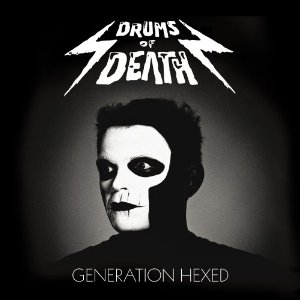 Drums Of Death, Generation Hexed (Greco-Roman)
Drums Of Death, Generation Hexed (Greco-Roman)
Over the past decade, blends of the disaffected vocals of early-1980s new wave with electro beats have become commonplace in clubland – but few, if any, do it with the verve and vim of Colin Bailey aka Drums of Death. His brilliance on his debut album is in mainlining the energy of proletarian rave-music styles with punky fearlessness, saving him from archness and turning the alienation in his songs into something liberating. A thoroughly invigorating record.
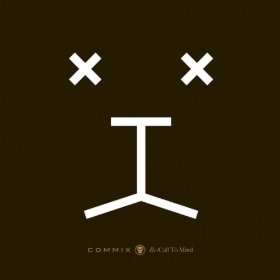 Commix, Re:Call To Mind (Metalheadz)
Commix, Re:Call To Mind (Metalheadz)
The vastly flamboyant Goldie is probably known best now for his televisual ubiquity, but his Metalheadz label remains a bastion of underground music. Drum-and-bass act Commix is here remixed by the absolute cream of leftfield talent: from Detroit's venerable techno godfathers Underground Resistance to shadowy young producer Burial, a whole range of tempo and rhythm is covered, but the atmosphere is consistently elegiac, the sound completely immersive and the execution impeccable. A darkly beautiful collection, and as good an introduction to current electronica as you could ask for.
The clear reference to Terry Riley's In C in the title does this record no favours as it never approaches the controlled chaos that the grand-mage of minimalism managed. However, on its own terms it is a sterling record of extremely elegant techno, ambient and noise pieces in which double bass, dulcimer, trombone and more are seamlessly woven into the electronic textures.
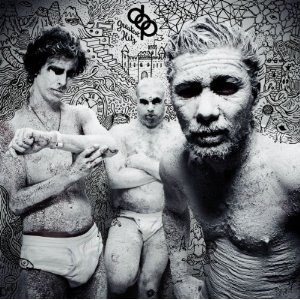 dOP, Greatest Hits (Circus Company)
dOP, Greatest Hits (Circus Company)
Could this be the most gloriously bohemian album of the year? Passing over the unoriginal jokey title (this is dOP's debut), the Parisian trio fuse together a sense of frayed decadence and fierce intelligence that can take a listener to very, very strange places. Gentle house beats occasionally pulse through, but this is far more about the steel pans, Chinese flutes, gongs and twinkling arrangements of the Macedonian Radio Symphonic Orchestra that surround the comically sociopathic musings, late-night café philosophy and funky refrains of portly, bearded singer “JAW”. Can't remember when I last heard music that so deserved the description “elegantly wasted”.
 Susumu Yokota, Kaleidoscope (Lo Recordings)
Susumu Yokota, Kaleidoscope (Lo Recordings)
Ambient music, in the sense that Eno originally created it, has the power to transform the space it's played in as surely as repainting the entire room would – and over a long career, Susumu Yokota has refined the art of producing atmospheres that are an immense pleasure to inhabit. These 16 rarified pieces of rippling light and shadow are among his finest work, the subtleties of their shifts of mood and colour so engrossing that you may find yourself playing any given one over and over out of sheer fascination.
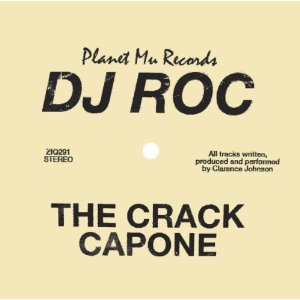 DJ Roc, The Crack Capone (Planet Mu)
DJ Roc, The Crack Capone (Planet Mu)
As an indicator of street-level dance music's endless ability to mutate and surprise, this collection of tracks made for Chicago's “footwork” dance contests is a fascinating document. As a listening experience, its sparse, jittery rhythms and cascades of tiny snippets sampled from urban music and popular culture – all supported by vast, pure bass tones – can be uncomfortable and confusing, at least until you come to understand the obscure rule sets at work. Definitely one of those peculiar records that makes you feel the world has entered a science-fiction reality.
 Hauschka, Foreign Landscapes (FatCat/130701)
Hauschka, Foreign Landscapes (FatCat/130701)
Where Volker Bertelmann's previous album of processed and modified piano, Ferndorf, felt internalised, isolated, this feels like it comes from collective dreamspace somewhere slightly outside of time. Using a chamber ensemble, Bertelmann has managed to bring a kind of mid-century audio Mitteleuropa into the 21st century and expand a framework built on Dvorak and Satie out to take in references to Japan and America. Somehow escaping both sentimental nostalgia and any sense of dry technical exercises, he's somehow created the perfect album for watching autumn leaves fall to.
Box Set of the Month
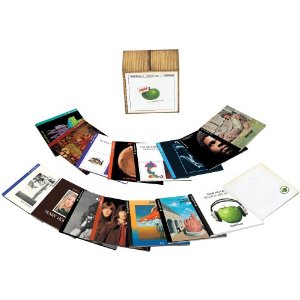 Apple Box Set, Various (Apple)
Apple Box Set, Various (Apple)
By Russ Coffey
After all the 70th-birthday hullabaloo about Lennon the man and musician, it’s easy to overlook his and his band-mates' experiences as musical curators. Apple records might have been founded after an accountant’s plan to get The Beatles a tax break, but it soon became a thing of love; a way to foster and nurture acts the Fab Four saw potential in. Mainly active over a five-year period that straddled The Beatles' break-up, the label obviously couldn’t last in that way. But whilst it worked, boy did it ever. This remastered re-release of the non-Beatles back-catalogue (available individually or as box set) is both a fascinating piece of documentary, and simply a treasure.
It’s hard to know where to start. There’s a taster CD, Come and Get it, which includes some remarkable tracks not available elsewhere, like Hot Chocolate’s reggae version of “Give Peace a Chance”. But it’s not representative of the set as a whole. Some tracks are just there because they are part of the Apple story, such as Brute Force’s novelty "King of Fuh" (which was banned for the not-so-hilarious lyric, the “Fuh king”). The real gems come from unexpected corners of the collection. Rock fans who purchase the whole set will, for instance, find themselves exposed, possibly for the first time, to the contemporary classical sounds of John Tavener, the Modern Jazz Trio, and the eastern spiritual strains of the Radha Krsna Temple. And intriguingly the latter actually came just before Harrison’s full-scale adoption of Krishna consciousness. In fact, throughout the 17 CDs, the accompanying booklets give a unique insight into the minds of the four most influential musicians on the planet just when they were at their most interesting - how The Beatles came to know these artists, the songs bequeathed and the guest appearances by them.
For the most part the re-issues demonstrate different shades of mainstream early-Seventies popular music. Yet it all sounds surprisingly fresh. For anyone whose imagination has been captured by the current crop of female folk singers like Kathryn Williams or Laura Marling, Mary Hopkin, rediscovered, will bring a new standard to match. Her voice had a clarity that her producer thought made her sound like one of the elves in Lord of the Rings, and the choice of songs on Earth Song – Ocean Song is nothing short of sublime.
And over to the ridiculous, funky American soul singer Billy Preston, a long-time associate of The Beatles, provides a real gut to the collection. That’s the Way God Planned it was so named because he never planned his success, it just kind of happened. His better album, Encouraging Words, however, really is like a gift from God, including early versions of Harrison’s later hits “My Sweet Lord” and “All Things Must Pass”.
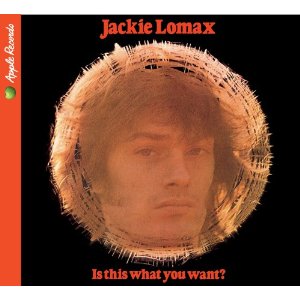 Harrison was also a driving force behind Jackie Lomax’s essential white-boy rhythm and blues, Is This What you Want, and Doris Troy’s eponymous soul offering. Again the all-star guests kept coming. Eric Clapton, Ringo Starr and George Harrison appear on both. James Taylor’s career was championed, however, by A&R man Peter Asher, whose internal memo simply read “James Taylor is an American singer and songwriter who is very good.”
Harrison was also a driving force behind Jackie Lomax’s essential white-boy rhythm and blues, Is This What you Want, and Doris Troy’s eponymous soul offering. Again the all-star guests kept coming. Eric Clapton, Ringo Starr and George Harrison appear on both. James Taylor’s career was championed, however, by A&R man Peter Asher, whose internal memo simply read “James Taylor is an American singer and songwriter who is very good.”
The box set’s longest single contribution comprises four albums from forgotten rock heroes, Badfinger. They start with the lightweight Magic Christian Music, and end with the heavy power-pop of Ass. Surely, as swan songs go few can match the misty-eyed beauty of the whimsically titled opener “Apple of my Eye”, written about their departure from the label. And it was the last album to be released on it other than those by ex-Beatles.
You often hear the expression, “They don’t make ‘em like that any more.” The thing is, right now, a lot of people are trying to make ‘em just like that, and best of luck to them. It’s just great to remember how good it was first time around.
Jazz CD of the Month
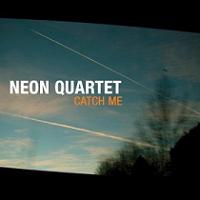 Neon Quartet, Catch Me (Edition Records)
Neon Quartet, Catch Me (Edition Records)
By Peter Quinn
Founded in March 2008 by pianist and composer Dave Stapleton and jazz photographer Tim Dickeson, the Cardiff-based Edition Records has been steadily amassing a fascinatingly diverse catalogue. Ranging from the solo piano heroics of Matthew Bourne to the improvised electronica of Spin Marvel, the label’s genre-defying artistic credo positions it within the same aesthetic orbit as Manfred Eicher's ECM. This is surely a good thing.
The label's latest release, Neon Quartet's Catch Me, is one of its strongest yet. I had the pleasure of hearing an earlier incarnation of the group a couple of years ago, a stunning trio gig at St Cyprian's in central London. Now expanded to a quartet featuring the consummate Stan Sulzmann on tenor/soprano sax, Jim Hart on vibes/marimba, plus new recruits Kit Downes on piano and Tim Giles on drums, the four-way dialogue on this set of 10 originals maintains a vice-like grip on your imagination. While Mercury Prize-nominee Downes is a straight swap for original pianist Gwilym Simcock, the addition of Giles opens up entirely new rhythmic and textural possibilities which the quartet fully exploits.
If tasked with the job of winning over a neophyte to the mercurial spirit, thrilling immediacy and adrenalised risk-taking of jazz, right now my track of choice would be Sulzmann's "Nepapanees". Building from a lone, hand-played drum riff, this seven-minute mini-epic bursts into life with a thunderous piano/vibes ostinato over which Sulzmann delivers a melodic line of scalp-prickling power. Other delights include the guileless lyricism of Downes's "Villiers", the Monk-like, stop-start games of Hart's "Passwords" - in which you couldn't blow smoke between the extraordinarily tricky melodic unisons - and the Impressionistic, wide-open spaces conjured up by the almost Debussy-like solo piano introduction to Sulzmann's "Skookum".
Combining meticulous ensemble playing with memorable writing, Catch Me announces a compelling new voice in British jazz.
Also-rans
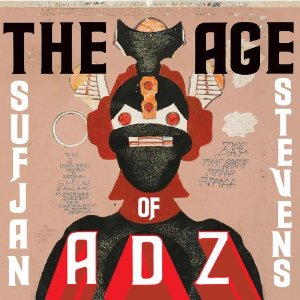 Sufjan Stevens, The Age of Adz (Asthmatic Kitty)
Sufjan Stevens, The Age of Adz (Asthmatic Kitty)
By David Cheal
An acoustic guitar, bright and warm; a voice, sweet and innocent; a melody, drifty and dreamy. Sufjan Stevens is back, and, contrary to his oft-quoted promise that his ambition is to record an album named after every state in the USA, it’s not called Maryland, or Nevada, or whatever. This is The Age of Adz. But still, to begin with, on the opening track, “Futile Devices", this seems rooted in the kind of territory in which those familiar with this prodigiously talented singer, multi-instrumentalist and composer will feel safe and comfortable: there’s brightness, warmth, sweetness.
Hold your horses, though. Track two, "Too Much", sees the introduction of a megalithic monster that lumbers and growls throughout the rest of the album – electronica. Stevens has dabbled in this sort of thing before, but overwhelmingly his music hitherto has been acoustic, orchestral, a little bit electric, but always organic. Here, though, and on much of what follows, a crushing electronic keyboard riff pulverises all in its path. It’s all rather shocking, especially to those who might have been expecting a continuation of the kind of gorgeously rich, rippling, multilayered compositions that were a feature of Sufjan Stevens's albums such as Illinois and The Avalanche. What we get instead is music that at times is almost maddening, hyperactive, dizzy; whereas once flutes would have soared and fluttered, here we have the sound, almost, of drum and bass.
This, then, sounds like the music of a man in big trouble. A battle of sorts rages between the musical forces of darkness – juddering, menacing, oscillating madly from ear to ear – and the voices of reason and calm. Whereas previously Stevens was absorbed by the world around him, here, all is internalised, inward-looking. On reflection, perhaps it’s not such a surprise that a man capable of such inordinately complex and brilliant music as he has produced in the past would experience a downward spiral; fizzy brains have a tendency to crash and burn. But still, to begin with, it comes as a shock. It turns out that this album is about a state, after all - a state of turmoil.
In the end, after more than an hour and a quarter of ebbing and flowing, in which episodes of gorgeous echoey beauty such as "Now That I’m Older" give way to the stabbing urgency of tracks such as "I Want to be Well", a resolution of sorts is reached in the epic closing track, "Impossible Soul", with its building refrain of “Boy, we can do so much more together”. It’s been quite a journey, and one that it’s hard to imagine many people wanting to repeat too often. But also, it’s one that leaves a lasting impression, a feverish jumble of sounds, and moods, and – yes, it does have them; they’re what makes The Age of Adz worth going back to – gorgeous tunes.
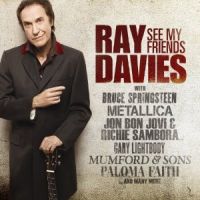 Ray Davies, See My Friends (Universal)
Ray Davies, See My Friends (Universal)
By Bruce Dessau
Ray Davies is a musical legend who deserves every honour bestowed upon him, but he has gone off at a decidedly bizarre tangent with this album in which he reworks his old songs with various diverse acts. While some bullet-proof classics are too evergreen to justify See My Friends being this month's Stinker, others are so whiffy I deleted them from my laptop immediately after filing this review in case my iTunes account ever gets frisked by the taste police.
Let’s get the bad news out of the way first. I realise “You Really Got Me” is considered to be one of the first heavy-metal songs but does anyone really want to hear it calibrated up to 11 by Davies and monsters of rock Metallica? Imagine your worst axe-orientated nightmare. But there's worse. When I first heard the bombast of “Celluloid Heroes” featuring Jon Bon Jovi I assumed it was a satirical Axl Rose parody. Even “Better Things”, boasting Bruce Springsteen, is one for Boss completists only.
On the other hand, it would take a nuclear strike to destroy the magic of “Waterloo Sunset” and Davies’s increasingly gruff tone nicely complements Jackson Browne’s glossy harmonies here. I have a perverse soft spot for overdressed chanteuse Paloma Faith, so her duet with Davies on “Lola” has charm and cheek by the truckload. “‘Til The End of The Day” with the late Alex Chilton – whose band Big Star previously recorded the song – has rich, retro appeal. “Dead End Street” with Amy Macdonald is fruity and jaunty, completed by a beautifully flirty chat plonked in towards the end.
The project sprawls in numerous directions, yet there are none of the obvious candidates who have been influenced by his Royal Rayness. No Damon Albarn. No Madness. No Paul Weller (The 88's "David Watts" inevitably fails to better The Jam's illustrious cover). This feels very much like an American heritage album rather than one homing in on Davies’s Britpop legacy. Perhaps the most contemporary lure is Mumford & Sons’ frenetic folk versions of “Days” and “This Time Tomorrow”, which are either good or unlistenable, depending on how much you like their trademark fiddly folk style.
If See My Friends introduces new fans to Davies that is clearly a good thing. But they would probably do better by heading straight to the motherlode. Unless you really need everything Snow Patrol’s Gary Lightbody has recorded – his “Tired of Waiting” is another lowlight – I’d skip this and grab either a Kinks greatest-hits album or 1968’s mightyThe Village Green Preservation Society.
Compilation of the Month
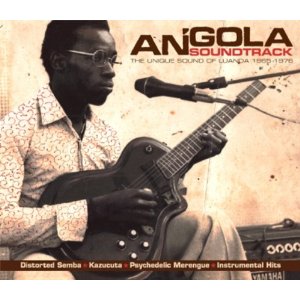 Various, Angola Soundtrack. Special Sounds from Luanda 1965 – 1978 (Analog Africa)
Various, Angola Soundtrack. Special Sounds from Luanda 1965 – 1978 (Analog Africa)
By Howard Male
This compilation began its life with these words read over the air on Angolan radio at the request of German music obsessive Samy Ben Redjeb: “Those round black plates that your dad used to play – he might still have some, hidden under the bed or in the cupboard; ask him, ask your uncles and your neighbours.” The calls flooded in, and after a bout of food poisoning, infuriating visa problems resulting in a year’s delay, and a sift through some 400 tracks, Samy had his record. Was it all worth it? Oh, absolutely.
I have to confess that before hearing this treasure-trove of music I only had the vaguest notion of what Angolan music sounded like, never mind Angolan music of the 1960s and 1970s. But I was intrigued to note how little influence the music of neighbouring South Africa had on this former Portuguese colony. Instead there is sometimes a strong Congolese influence in the raw, cyclical guitar riffs, as hints of the more measured grooves of Cuban music and Jamaican reggae. Plus it’s so easy to forget the influence of early rock'n'roll and pop on African music until you hear the twanging tone of some Hank Marvin-style twangy guitar on some of the material.
But the first thing that’s so striking about every one of these 18 tracks is the fun being had by the musicians, especially given that during this period the country was in the middle of an anti-colonial war between three different armed liberation movements and the Portuguese army. This music therefore became a part of the Angolan people's need to forge a new identity out of new sounds and a new spirit of freedom. Every tune speed boats off on a tide of complex percussion, racing bass and jangling edgy guitar.
But the delight is in the details, and the fact that it’s a joy to hear the electric guitar be used for something other than rock posturing. For example, on the rock-steady-ish instrumental “Ilha Virgem” the guitarist travels swiftly up the fretboard on one string, making bird-like trills. Anyone picking up a guitar for the first time could do this, but no “proper” musician does it - except for this guy on this track. The other factor in the unstoppable momentum of these grooves is the vintage of the material. There would have been no deadening click tracks to keep time to, putting the breaks on the natural tempo fluctuations that occur when a band is firing on all cylinders.
Much of the history of this music and the people who made it - along with the convoluted struggle Ariel de Bigault had to endure to collate the material - can be found in the wonderful 44-page illustrated booklet that comes with the CD. In this age when music fans are turning to the inferior sound-quality medium of downloads, it's immensely reassuring when a record company puts so much effort into making their product as desirable to the consumer as possible. This is one of the compilations of the year, and it gets better with every listen.
Share this article
Add comment
more New music
 The Songs of Joni Mitchell, Roundhouse review - fans (old and new) toast to an icon of our age
A stellar line up of artists reimagine some of Mitchell’s most magnificent works
The Songs of Joni Mitchell, Roundhouse review - fans (old and new) toast to an icon of our age
A stellar line up of artists reimagine some of Mitchell’s most magnificent works
 Album: Taylor Swift - The Tortured Poets Department: The Anthology
Taylor Swift bares her soul with a 31-track double album
Album: Taylor Swift - The Tortured Poets Department: The Anthology
Taylor Swift bares her soul with a 31-track double album
 Album: Jonny Drop • Andrew Ashong - The Puzzle Dust
Bottled sunshine from a Brit soul-jazz team-up
Album: Jonny Drop • Andrew Ashong - The Puzzle Dust
Bottled sunshine from a Brit soul-jazz team-up
 theartsdesk on Vinyl: Record Store Day Special 2024
Annual edition checking out records exclusively available on this year's Record Store Day
theartsdesk on Vinyl: Record Store Day Special 2024
Annual edition checking out records exclusively available on this year's Record Store Day
 Album: Pearl Jam - Dark Matter
Enduring grunge icons return full of energy, arguably their most empowered yet
Album: Pearl Jam - Dark Matter
Enduring grunge icons return full of energy, arguably their most empowered yet
 Album: Paraorchestra with Brett Anderson and Charles Hazlewood - Death Songbook
An uneven voyage into darkness
Album: Paraorchestra with Brett Anderson and Charles Hazlewood - Death Songbook
An uneven voyage into darkness
 theartsdesk on Vinyl 83: Deep Purple, Annie Anxiety, Ghetts, WHAM!, Kaiser Chiefs, Butthole Surfers and more
The most wide-ranging regular record reviews in this galaxy
theartsdesk on Vinyl 83: Deep Purple, Annie Anxiety, Ghetts, WHAM!, Kaiser Chiefs, Butthole Surfers and more
The most wide-ranging regular record reviews in this galaxy
 Album: EMEL - MRA
Tunisian-American singer's latest is fired with feminism and global electro-pop maximalism
Album: EMEL - MRA
Tunisian-American singer's latest is fired with feminism and global electro-pop maximalism
 Music Reissues Weekly: Congo Funk! - Sound Madness from the Shores of the Mighty Congo River
Assiduous exploration of the interconnected musical ecosystems of Brazzaville and Kinshasa
Music Reissues Weekly: Congo Funk! - Sound Madness from the Shores of the Mighty Congo River
Assiduous exploration of the interconnected musical ecosystems of Brazzaville and Kinshasa
 Ellie Goulding, Royal Philharmonic Concert Orchestra, Royal Albert Hall review - a mellow evening of strings and song
Replacing dance beats with orchestral sounds gives the music a whole new feel
Ellie Goulding, Royal Philharmonic Concert Orchestra, Royal Albert Hall review - a mellow evening of strings and song
Replacing dance beats with orchestral sounds gives the music a whole new feel
 Album: A Certain Ratio - It All Comes Down to This
Veteran Mancunians undergo a further re-assessment and reinvention
Album: A Certain Ratio - It All Comes Down to This
Veteran Mancunians undergo a further re-assessment and reinvention
 Album: Maggie Rogers - Don't Forget Me
Rogers continues her knack for capturing natural moments, embracing a more live sound
Album: Maggie Rogers - Don't Forget Me
Rogers continues her knack for capturing natural moments, embracing a more live sound

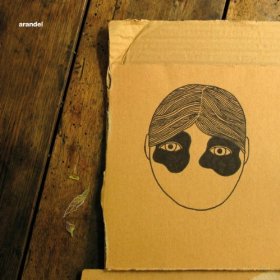
Comments
...